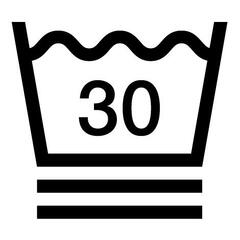Developed and validated by ocean racing skippers
The Tribord Offshore 900 ranges have been developed and tested with navigators during a transatlantic race, as well as solitary offshore races, and on various boats: Jean-Baptiste Daramy on Class 40, Achille Nebout on Figaro 3, Romain Le Gall and Léo Bothorel on Mini 6.50.
The fabric’s water resistance level
The fabric features 3-layer construction and is resistant to water pressure of 30,000 mm Schmerber (JIS standard). The higher the water pressure withstood by the fabric, the more waterproof it is.
The product has been tested using a rainstorm simulator, reproducing rainfall of 450 L/M²/h over 24 hours (3x8 hours)
Shell jacket waterproofing
- The neoprene sleeve seals limit water getting in.
- The neoprene belt can be adjusted via a drawstring in 2 places, avoiding water getting in between the shell jacket and the overalls.
- The seams are 100% watertight.
- A rigid visor has been integrated into the hood for greater protection.
What is water repellency and how to maintain it
The fabric and fastenings are water-repellent.
A fabric is water-repellent when water slides off the surface without seeping in.
It won’t become waterlogged and remains lightweight and breathable. The water-repellent properties are achieved with a treatment (DWR) applied to the external side of the fabric, but these properties can be altered.
The water-repellent properties can be reactivated by putting the jacket in a dryer for 10 minutes at the lowest temperature.
Breathability
To find out whether a fabric is breathable, we measure its evaporative resistance, or RET, (test based on the ISO 11092 standard). It is its ability to allow the water vapour produced by the body during exercise to escape.
To find out whether a fabric is breathable, we test its evaporate resistance or RET (ISO 11092 standard). The lower the fabric's resistance, the more moisture is evaporated, and therefore the higher the fabric's breathability.
This product’s RET is 25.
Hood and double collar can be removed
The collar is made of 2 sections:
- A neoprene sections with a zip and rip-tab to make it easier to adjust and to prevent water getting in at the collar. This collar goes up to the middle of the neck.
- A “storm” section, with the hood and collar going up to the nose, for optimal protection. This section can be removed thanks to the zipper around the neck. The inside of the collar is lined with a soft micro-fleece for extra comfort.
- The collar can be closed using the rip-tab fastening.
Adjusting and storing the hood
- The hood can be stored in the collar of the shell jacket.
- The hood can be adjusted in 2 places: one adjustment at the front, to adjust around the face and avoid the hood blowing off in the wind, and the other is on the head, to adjust the depth of the hood.
- A rigid visor has been integrated into the hood for greater protection.
Double sleeve seals
- A section with a neoprene sleeve seal against the skin to prevent water getting in during bouts of bad weather.
- A sleeve seal in a waterproof material, which can be adjusted with rip-tab to protect the neoprene and provide optimal waterproofing
Tips: if you wear mitts or gloves, wear them between the 2 sleeve seals for extra comfort and to avoid water getting in through any gaps or creases.
Pockets
The shell jacket has 2 large pockets:
- one waterproof front storm pocket with separate compartments, which can easily be opened via the fold. Inside the storm pocket is a waterproof pouch suspended on elastic with a removable hook, perfect for storing your mobile phone
- 1 joined hand pocket, not waterproof, with fleece lining on the outside.
The pockets have a drainage system to facilitate water evacuation.
Resistance to wear
The shell jacket has reinforced elbows and forearms for optimal abrasion-resistance.
Weight
In Size L, the shell jacket weighs:
- 1020 grams with the collar
- 760 grams without the collar
How to choose the size of your shell jacket
The product sizing is generously cut. They have been designed to be worn with thermal underlayers and a fleece underneath.
For men, choose your usual size.
For women, choose one size smaller than your usual size
How to wash your shell jacket
After use, rinse thoroughly with clean water, paying attention to the zippers, to remove any salt.
Dry on a clothes hanger in a well-ventilated place.
We recommend that you lay your shell jacket flat on a clothes rack and leave it to air-dry. Caution: never dry your shell jacket directly on a radiator.
The loop on the back allows you to hook your jacket onto a hook or coat stand to dry, if you can’t lie it out flat
How to wash your shell jacket Step 1
Close all zips and flaps. Also remember to loosen the straps and elastic parts (the hood) and empty the pockets.
Then turn the clothing inside out to wash it.
How to wash your shell jacket Step 2
You can wash your jacket on a synthetic cycle at 30 °C with your usual detergent. Do not use fabric conditioner, which could damage the existing performance of the garment, or bleach.
Also take care not to bend your shell jacket too much when you place it in the washing machine and do not overload your machine.
Very important: select a thorough rinse or double rinse to completely remove all detergent residue.
How to reactivate the water repellency
Drying is a crucial phase in reactivating the water repellent treatment.
We recommend that you lay your shell jacket flat on a clothes rack and leave it to air-dry. Caution: never dry your shell jacket directly on a radiator or in direct sunlight.
Then place it in the tumble dryer on a short synthetics cycle, i.e. 10 to 15 minutes, before turning it back the right way round. Caution: do not over-dry the garment.
How to dry or hang up your shell jacket
A fabric loop allows you to hook your jacket onto a hook or coat stand to dry it.
What’s the difference between a shell jacket and a sailing jacket?
The shell jacket has been adapted for manoeuvres at the bow of a boat (positions 1 and 2), and allows for increased protection in extreme weather conditions, thanks to its half-zip.
Nevertheless, the jacket is rather advised for less exposed positions, and its zipper allows for the jacket to be entirely opened, easily and quickly.




